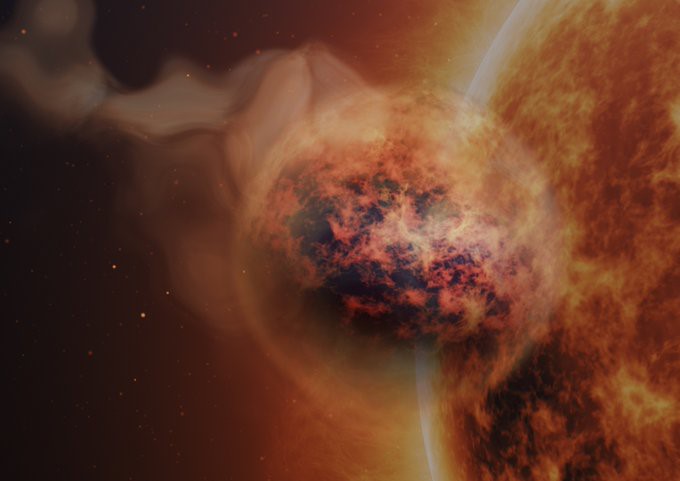
Wasp-107b

18.11.2023
Wasp-107b , Daily Current Affairs , RACE IAS : Best IAS Coaching in Lucknow
|
For Prelims:About Wasp-107B ,Important points,A water cycle similar to that of Earth, Giant gas planet |
Why in the news?
Recently, NASA's James Webb Telescope has discovered a new exoplanet named Wasp-107b.
Important points:
- Atmospheric composition has been discovered in Wasp-107b, including water vapor, sulfur dioxide, and clouds of silicate sand.
- The team studying WASP-107-b made their observations using the telescope's Mid-Infrared Instrument (MIRI).
- This unprecedented study is the first time astronomers have analyzed the composition of clouds on an exoplanet.
About Wasp-107B:
- It is a newly discovered exoplanet, first discovered in 2017.
- This planet, located 200 light years away in the constellation Virgo, also exhibits a water cycle similar to Earth.
- WASP-107b has a mass of 30.5 Earths, and takes only six days to orbit its home star.
- It is slightly cooler and less massive than our Sun.
- Wasp-107b orbits the Sun but exists beyond our solar system. It is called "candy floss".
- It is so called "candy floss" because it is much less dense than other gas giant planets.
- Its size is like Jupiter but its mass is like Neptune.
- WASP-107b has only 12% the mass of Jupiter.
- The planet's low density allowed astronomers to see 50 times deeper into the planet's atmosphere than observations obtained for more dense planets such as Jupiter.
- The exoplanet is extremely hot (the outer atmosphere exceeds 900 degrees Fahrenheit).
A water cycle similar to that of Earth:
- Wasp-107b displays a water cycle similar to Earth's, but instead of water droplets, the planet 'rains sand'.
- Although the planet's water and cloud cycles are similar to Earth's, its clouds are composed of sand and clouds are composed of silicates.
- The falling grains are, in fact, silicate vapors rising from lower atmospheric levels.
- Similar to Earth's water cycle, these sand clouds return to lower planetary atmospheric levels.
Giant gas planet:
- Gas giants are large planets composed mostly of gases such as hydrogen and helium with relatively small rocky cores.
- Our solar system's gas giants – Jupiter, Saturn, Uranus and Neptune – together form a group known as the Jovian planets (Jupiter-like).
- The Solar System's four gas giants reside farthest from the Sun, beyond the orbits of Mars and the asteroid belt. Therefore they are also called outer planets.
- All the outer planets have numerous moons. They all also have planetary rings, made of dust and other small particles that surround the planet in a thin plane.